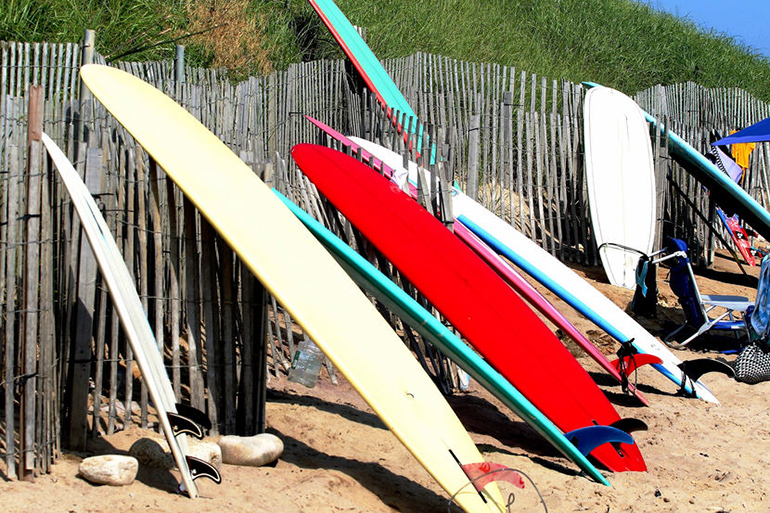Ditch Plains: Prominent Montauk Surf Spot Fights to Stop Trademark

The Seena International clothing company has done it again. And all those who care about Montauk are all aquiver. East Hampton Town, which administers Montauk, has hired a law firm.
Seena, based in Hauppauge, has been manufacturing hoodies, T-shirts and other items with the name DITCH PLAINS on them since 2005, Newsday reports. In 2008, they applied to trademark the name of that prominent surfing spot—ranked as #8 on the East Coast in one survey—which, had it been successful, could deny other businesses the ability to use that name or require them to have paid Seena for the privilege.
RELATED: Ditch Plains: Can I Say “Ditch Plains” or Do I Have to Pay Somebody to Do So?
The claim startled everyone. It became a court case, and soon there was a ruling that said because there was a restaurant in Manhattan named “Ditch Plains,” the application could not proceed.
Well, now the restaurant has shut its doors, and Seena is renewing its application. The Town, according to Newsday, has hired Ferdinand IP, an independent law firm familiar with trademark law, to rise to the defense.
Most people think that filing for a trademark usually involves just one category of things. For example, when Pepperidge Farm created its MONTAUK cookies many years ago, they likely never expected that the name could not be used for other things. There could be a breakfast cereal called Montauk, or a sneaker called Montauk, and that wouldn’t bother them, I imagine.

In this case, however, it seems to have been only the existence of the New York City restaurant that blocked the application by Seena. So, apparently, Seena is going after the whole enchilada.
I think I have a solution to this problem: If Seena wins this legal battle, we change the name of Ditch Plains to Dutch Plains.
Most people think that the first settler on eastern Long Island was Lion Gardiner, an Englishman who landed here in 1639. What is rarely considered, however, is the arrival of Dutchman Adriaen Block, who first sailed by Long Island and drew a map of it (and the rest of the northeast) in 1614.
That there is no evidence he ever set foot on the island has long been taken for granted, but now there seems to be some evidence he did come ashore to trade with the local Indians. A perfect place to have done that—particularly if his crew were avid surfers—might have been at what up until now is called Ditch Plains in Montauk.
Rename it to Dutch Plains in Mr. Block’s honor. And trademark it.




